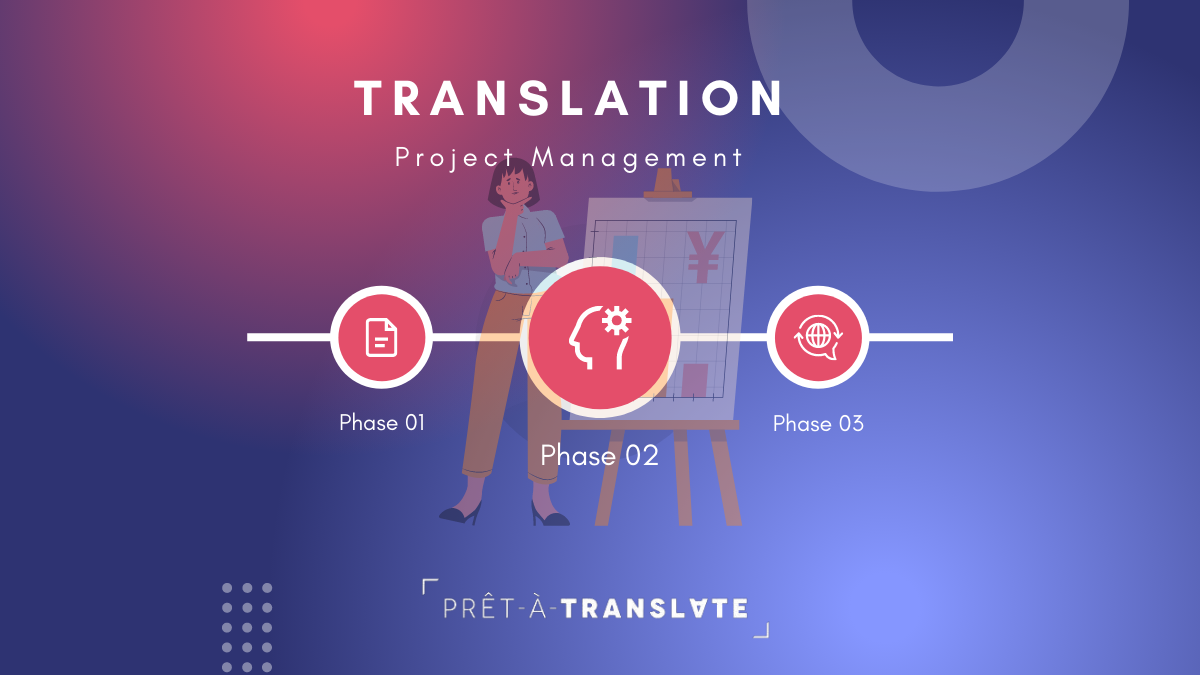
A Guide to Translation Project Management
Today I’m talking about project management in translation.
Even freelance translators who don’t outsource jobs to other colleagues will do project management as they have to plan costs, schedule jobs and do QA checks before delivering.
In a multilingual environment, the tasks can get a bit more complex.
This post will give you a deeper knowledge of what translation project management involves, the primary tasks and also what project managers shouldn’t do.
As it’s a long post, you can use the table of contents below to navigate it.
Table of contents
Do’s and Don’ts of a translation project manager
Besides handling everyday tasks, there are certain attributes that make great project managers; the best PM’s are ‘do-ers’ and will be:
👍 Flexible
👍 Patient
👍 Organised
👍 Communicative
👍 Polite
👍 Able to accept success/failure as a team
👍 Good at taking responsibility
In my experience PM’s should not:
👎 Take things for granted
👎 Treat people with disrespect
👎 Be impatient
👎 Blame others for things that are your fault
👎 Take shortcuts!
These may sound very simple and straightforward, but through many years of experience I have seen both the good and the bad!

The translation PM is a single point of contact
Managing a group of translators from different countries and cultures can be stressful and time consuming. That’s why having a translation project manager as a filter between the client and translators can be a huge benefit.
The PM helps to provide a smooth workflow, ensuring issues don’t affect the translation quality or overall project delivery.
As a translation project manager, these are some of the tasks I do for my clients:
✴️ Prepare a team according to the project requirements.
✴️ Transmit all instructions and requirements to the translation team.
✴️ Help the client understand the translation process and how they can help translators by providing translation-friendly texts and helpful reference material.
✴️ Anticipate any potential issues that could affect the deadline and find solutions.
✴️ Prepare files so that translators can use CAT tools to translate efficiently.
✴️ Filter queries.
Selecting a team
Building a translation team is no easy task.
As translation project manager, I always select the best team according to the project requirements.
This includes:
✴️ Experience in the translation domain.
✴️ Experience using specific tools.
✴️ Task preferences (some translators prefer translation only, while others are also happy to review).
✴️ Availability.
✴️ Rates.
✴️ Communication and team spirit.
When I’m required to outsource any translations, clients are putting their trust in Prêt-à-translate to deliver. So besides translation, I also place a lot of value in soft skills and trust.
Over time I’ve built a preferred translators list so I can handle multilingual projects. I regard all of them as colleagues and part of my team.

Cost control
Costs are an essential part of any project and in translation, this is no different.
Once the client has accepted a quotation, the project manager needs to ensure that they have enough funds to cover all tasks and potential issues while maintaining profits.
Examples of costs include:
💶 Translation costs
💵 Review costs
💷 Costs of additional tasks (pictures with texts not included in the original quotation, additional texts, glossary creation/update, DTP checks, etc.)
💶 Costs of adding new translators to the team, who may have different rates than the ones initially estimated
💵 For word packages (similar to a subscription model), the PM should notify the client when the package is about to expire or when the costs are about to be spent so that they can order a new package
It’s not an easy task, believe me.
Does being a translator make you a better translation project manager?
In my opinion, being a translator can certainly be a benefit for translation project management:
✴️ You can foresee translators’ needs and act proactively
✴️ You use CAT tools and can help translators with potential issues
✴️ You can spot errors in the files before final delivery and identify false positives in QA reports
✴️ You can reply to some of the questions raised by the translators and save time asking the client
✴️ You know where to find reference material, as you would go to those sites if you were the translator
Of course, project managers that don’t have previous experience as a translator can learn all these things.
However, if they already have this experience, it can help to speed up the process.
The usual path in the translation industry is to start as a translator, then move to the editor job, and finally, you can work as a project manager.
Or like me, you can do all three!
Multitasking at its finest 😉.
QA tasks performed by the translation PM
The project manager is the last person to work with the files before delivering the translation to the client.
Therefore, they’re responsible for the final translation quality ✅.
To ensure that the translation is good and meets the client requirements, project managers should always run QA checks on the files, even if a second translator has reviewed them.
And even if they don’t speak the language of the translation they’re delivering 😮.
There are QA tools, such as Xbench that allow identifying errors such as:
✅ Untranslated terms or sentences
✅ Inconsistent translations
✅ Spelling mistakes
✅ Trailing spaces
✅ Terms that don’t match the terminology provided by the client
These tools often include many false positives, which the PM or the translator should identify 🤷♀️.
But still, we recommend using them because they always spot some errors that need fixing.
And the PM may need the help from the translator or the reviewer to correct these issues. Teamwork!
Another check the project manager should do is make sure the final file format is ok and the client can open it, and that there are no corrupted characters in the translation.
They also need to confirm with the translation team that any pending queries were solved and applied to the translation.
And finally, they need to confirm with the translation team if there are any comments they’d like to send to the client, like changes in some references used, or reasons for not following a specific instruction (because it’s not applicable for a given language, for example).

Summary
We hope that you’ve found this guide useful.
Unfortunately poor project managers do exist, often working between client and translator (and charging both for the ‘service’ of transferring files from one to the other).
As you’ve seen, a translation project manager does much more than that.
There are lots of things to consider with translation projects and having someone managing everything can be a great way of ensuring it all runs according to plan.
The translation project manager is another team member, and their work is essential for smooth project development.
And we charge clients for these tasks. It’s not a commission.
Did you know that Prêt-à-translate is now on LinkedIn and Instagram? Follow these accounts to get regular updates and insights into translation and localization on social media channels.
And if you want to get them directly on your email, subscribe to our newsletter.
See you for the next post!
